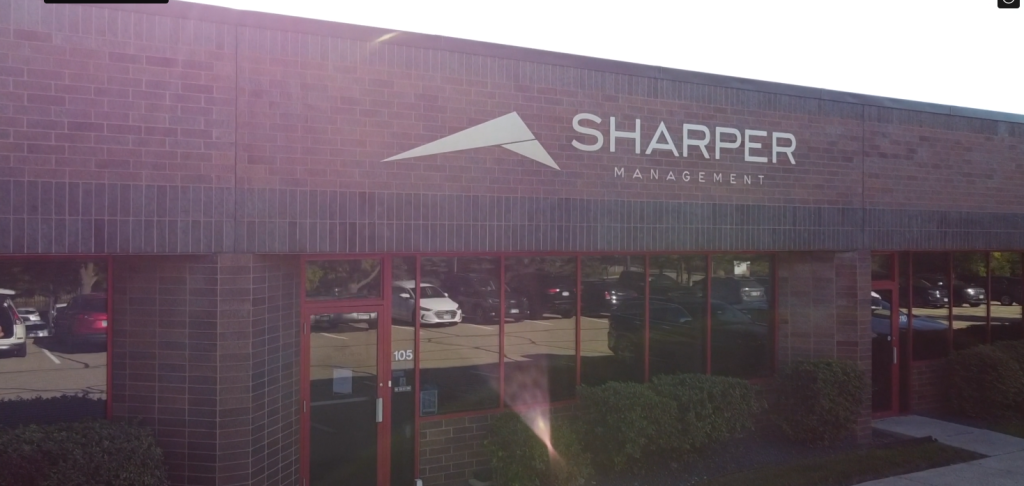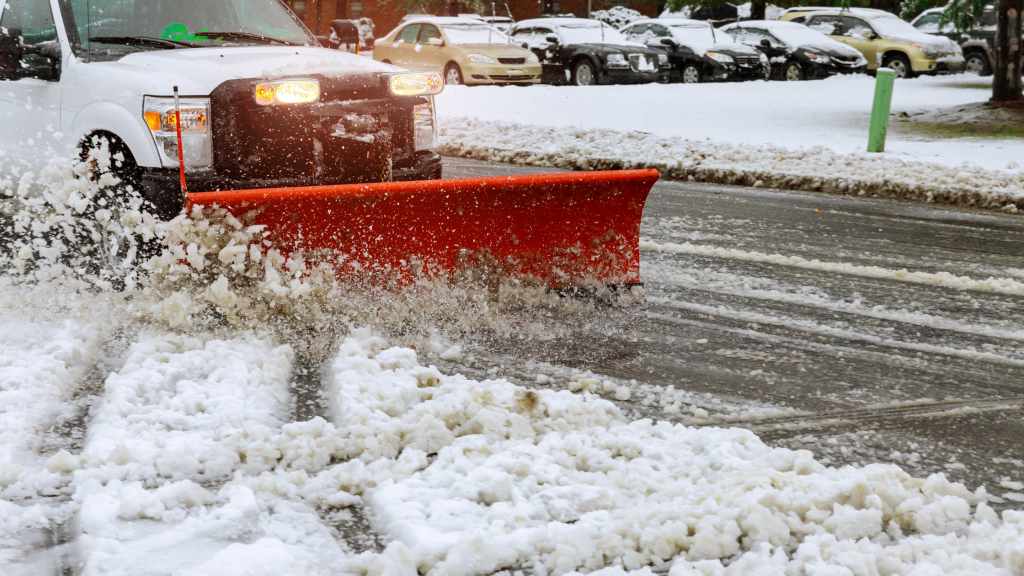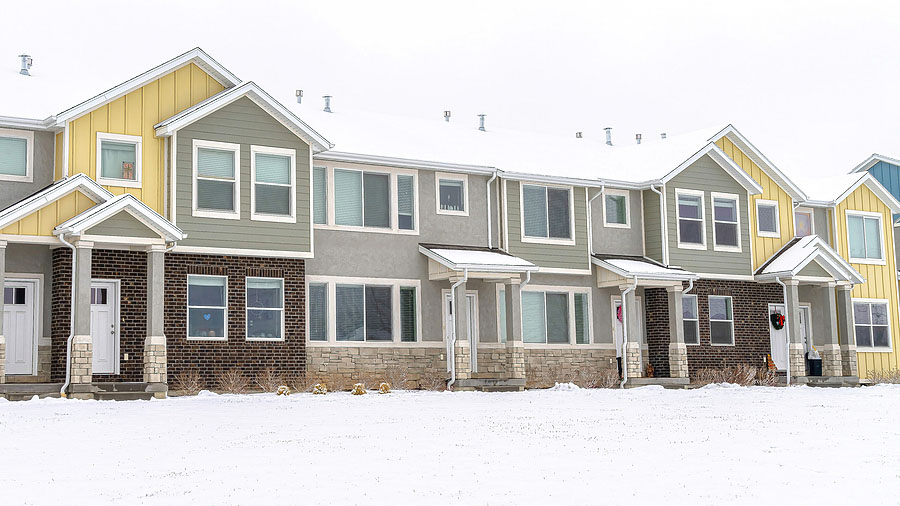The Importance of Loss Assessment Coverage

Insurance in an Association can be confusing. One important distinction in your personal homeowner policy package (commonly called an “HO6” policy) is Loss Assessment Coverage. This coverage is typically different from your “Real Property Coverage.” Real Property Coverage should cover your personal contents, coverage of building construction items like flooring and walls that may NOT be insured by the Association’s Master Policy (which can vary greatly by Association) and, at a bare minimum, coverage of all of those covered components up to the Association’s Master Policy deductible. Loss Assessment Coverage is separate and important to understand. At is core, it is actually quite simple. The Association typically assesses the owner(s) for their share of the Master Policy’s deductible in the event of a loss. The homeowner simply submits that letter, stating they’re being assessed to their HO6 carrier, and their HO6 carrier pays out that deductible assessment. *If the owner doesn’t have this coverage, it is out of their pocket and the Association will move to collect on it just as they would any other regular assessment (“dues”) or special assessment. This is becoming increasingly important because, for the past decade, Association Master Policies have had increasing deductibles – sometimes $25,000 or $50,000 on common losses; and almost all Association policies now have a separate percentage-based deductible for a loss related to wind and/or hail damage. This “wind/hail deductible” is often based on the building value and can range from 2-5%. In the case of a hail storm and loss, homeowners are susceptible to significant assessments to help the Association make up the deductible. Let’s go through three scenarios to help understand how Association deductibles work – and how (and why) Loss Assessments Coverage comes in to play. Scenario 1 – Condo Building Water Leak Unit 200 has a backed-up sink that caused water damage to unit 200 and 100 below. The Association has a $10,000 deductible on the Master Policy that has “all-in” coverage. Damage to both units totals $50,000. The Master Policy is going to cut a check to the Association for $40,000 (less the $10,000 deductible). The Association is going to assess both unit owners $5,000 to make up the $10,000 deductible. The Association is made whole on the claim and the loss/damages remedied. Scenario 2 – Fire to a Townhome Unit The end unit of a townhome complex sustains a fire and the unit is destroyed. The Association has a $25,000 deductible on the Master Policy that has “all-in” coverage, less “betterments and improvements.” Damage to unit is a complete loss. Value for the home is determined to be $200,000 to rebuild the unit back to the original specifications. The Master Policy is going to cut a check to the Association for $175,000 (less the $25,000 deductible). The Association is going to assess that homeowner (since it was the only unit affected) $25,000 to make up the deductible. The Association is made whole to rebuild the unit to the original specifications – the homeowner’s HO6 policy covers the personal contents and any “betterments and improvements” that may have been made by the owner, subject to whatever they had for real property coverage. Scenario 3 – Hailstorm to a Townhome Development Now it gets complicated. A 100-unit townhome development sustains a hailstorm and the roofs are totaled. The Association has a 4% wind/hail deductible on their policy and a total property value at $30,000,000. The loss for getting new roofs will cost $3,000,000. The Master Policy deductible for the hailstorm is $1,200,000 (4% of $30,000,000). That means the Association will receive a check for $1,800,000 (less the $1,200,000 deductible). The Association is going to assess every unit owner $12,000to make up the $1,200,000 deductible. The Association is made whole on the claim and new roofs are installed. In each of these scenarios, the Association is assessing the deductible back to the owners benefiting. Scenario 3 is significant, because the Association has to collect $12,000 from EVERY unit owner. It is a vulnerable place for the Association to be in. And it is a vulnerable place for each homeowner to be in if they don’t have Loss Assessment coverage to cover that assessment. Hopefully this is helpful in understanding how Association deductibles work – but more importantly, hopefully it illustrates just how imperative it is that EVERY owner has adequate Loss Assessment coverage as part of their H06 policy package.
Communication is Key: Forging Stronger Communities through Effective HOA Communication

The Foundation of Community Harmony Effective communication lies at the heart of a thriving Homeowners Association (HOA). In this blog post, we will delve into the critical role of clear and transparent communication within an HOA, exploring why it is the foundation for building stronger, more harmonious communities. The Significance of Clear Communication in HOAs Clear communication is the lifeblood of any community, and HOAs are no exception. Your community wants to feel heard, and they also want to feel valued, which does not happen without communication. If you are implementing changes, those changes need to be effectively communicated to establish trust along with cooperation. When people feel left in the dark when it comes to changes, negativity and anger can arise, which is never good. It is important to show through your communication efforts a sense of unity among residents to create a healthy community environment. The Impact on Community Engagement When communication is conducted effectively, community engagement improves along with transparency. Residents will feel more inclined to join community events, participate in discussions and create a sense of belonging. This can even open the door to new initiatives created when people feel like they are in a positive environment to want to make positive changes themselves. Tips for Successful Communication Strategies in HOAs 1. Regular Newsletters and Updates: Explore the power of regular newsletters or community updates distributed through various channels. Sharing consistent information keeps residents informed about upcoming events, policy changes, and other crucial updates. 2. Digital Platforms for Community Interaction: Communication through social media and online forums is another great communication strategy. These channels provide a space for residents to voice concerns, share ideas, and connect with their neighbors. 3. Town Hall Meetings and Open Forums: Town hall meetings and open forums create a platform for direct communication between the HOA board and residents. By creating regularly scheduled meetings can improve transparency and address concerns in real-time. 4. Utilizing Email and Text Notifications: Email and text notifications for urgent updates or time-sensitive information is a great way to keep your community informed. These channels ensure that residents receive critical information promptly. Handling Conflict Through Effective Communication Conflict is inevitable, but effective communication can be a powerful tool for resolution. By effectively communicating the rules set for your community, you leave less room for confusion or interpretation and more room for transparency and guidelines. There can come times when conflicts arise internally between other community members and by having clearly defined rules prevents these conflicts from escalating. Building a Culture of Transparency As mentioned earlier, transparency is crucial to maintaining a healthy community and should be considered a cultural cornerstone within an HOA. Setting a culture of transparency, openness and honesty builds trust among residents. In turn, by being as transparent with residents as possible promotes a positive community atmosphere. Elevating Community Living Through Clear Communication Having successful communication tactics lead to running a healthy HOA. By being transparent with your community through various forms of communication, you keep your residents happy and informed. It is not just a necessity but a catalyst for building vibrant communities. Take advantage of multiple communication strategies from newsletters to open forums. Continual communication efforts are required to maintain a healthy community. Ready to elevate your HOA management? Contact us today to learn more about Sharper Management’s HOA property management services. Sharper Management is a locally-owned, mid-sized property management company offering a full-suite of premiere services to the Minneapolis-St. Paul seven-county area.
2024 Sharper Event Calendar

Mark your calendars for the following Sharper events, which are all free to you as a valued client and Board member. Board Training Opportunity – January 24 The first in our quarterly Board Training sessions will be Wednesday, January 24, 2024, 6 p.m. at the Wells Fargo Plaza, 2nd Floor Training Room at 7900 Xerces Avenue in Bloomington, MN 55431. The 90-minute session will be led by director of business development and education, Josh Reams, CMCA, AMS, PCAM. This session will focus on defining associations and association meetings. Topics include: If you are interested in reserving your spot, please email clientcare@sharpermanagement.com 2024 Save-the-Dates Board Training Schedule: January 24 – Board Training: Associations Defined & Association Meetings February 21 – New Client Orientation April 24 – Board Training: Roles & Responsibilities of the Board & Property Management Practices July 24 – Board Training: Associations Defined & Governing Documents July 26 – July Sharper Scramble Golf Tournament August 22 – New Client Orientation & Board Member Appreciation BBQ October 23 – Board Training: Insurance & Financials
Legislative Changes Affecting HOAs

The 2023 legislative session in Minnesota was active, with several significant bills that will impact community associations in the state. Below is an abbreviating listing of those topics. As the laws are further defined and incorporated into daily living in HOAs, we will continue diving deeper into these topics in future newsletters and publications. Marijuana/Cannabis A controversial topic, to be sure, that has been swirling around Minnesota for the past few years became a new law – Minn. Stat. #342. As a part of the comprehensive language passed, specific points related to associations and multi-resident/unit dwellings. We have to look at it in two ways. One issue is smoking, and the second is growing. Associations will have to navigate both problems. What it Says – generally, smoking or vaping in multi-resident/unit housing is unlawful and a nuisance under the statute. Growing is allowed with some limitations (maximum of eight plants). When it comes to growing, it does get a little more complicated. The new law allows people to grow up to eight cannabis plants, with no more than four being mature; flowering plants may be grown at a single residence. Must be the primary residence of a person 21 or older. If outside, it must be (1) enclosed; (2) locked; and (3) not visible to the public. The current law does not reference multi-family/unit developments (HOAs). Whom it Affects – all HOAs What it Means – Vaporizing or smoking cannabis flowers, cannabis products, artificially derived cannabinoids, or hemp-derived consumer products is prohibited in multi-family housing buildings, including balconies and patios. By existing state statute, boards also can govern common areas, including prohibiting smoking or vaping of cannabis products if they so choose. When it comes to growing, the association still controls common areas and can prohibit growing in limited common and common areas. However, they cannot regulate or disallow growing inside of the unit/home. The association’s Declarations would have to be amended to specifically disallow it. That said, the association does have the ability to manage and respond to nuisance issues. Both state statutes and Declarations typically say something to the effect of: Quiet Enjoyment; Interference Prohibited. All Owners and Occupants and their guests shall have a right to peaceful enjoyment in their respective Units. They shall use the Property in such a manner as will not cause a nuisance nor unduly restrict, interfere with, or impede the use of the Property by other Owners and Occupants and their guests. Should the growing of cannabis create issues, such as smell, and other owners complain, the association does have the right to ask an owner to cease the activity that made said nuisance. This issue could become challenging for an association to navigate, and it should seek legal counsel. When it Goes into Effect – July 1, 2023 Summary: our friends at the Smith, Jadin, and Johnson law firm recently spoke to Sharper Manager at length on this issue. An overview of their recommendations is as follows: Send an update to Owners regarding the marijuana bill explaining that as multifamily housing, smoking and vaping are prohibited. Take any complaints seriously and send violations consistent with Rule enforcement procedures. Keep a good paper trail. For complaints lodged, Board will need to know (1) when the alleged violation occurred and (2) who was the violator. If an Owner complains that they “smell” smoke, they can’t send a violation to every Owner. However, a general “reminder” email blast may help paper the file in case of a nuisance lawsuit. If a lawsuit for nuisance arises – 1. If procedures are followed (sent violation), tell Owner you have enforced and that they must drop the case or else the HOA will defend itself and assess fees • 2. If procedures are not followed, settle Solar Panels Like satellite dishes 20 years ago, associations must navigate homeowners wishing to install solar panels on rooflines. This has been a discussion amongst legislative bodies for the past few years. This year it finally got traction, and Minn. Stat. # 500.216 was passed. The bottom line, the new law limits some associations from prohibiting solar panels on rooflines. What it Says – “Notwithstanding any … homeowners association document, … a private entity must not prohibit or refuse to permit the owner of a single-family dwelling to install, maintain, or use a roof-mounted solar energy system.” Whom it Affects – Single family HOAs and any HOAs where the Owner is responsible for maintaining and insuring the dwelling (roofs, siding). Note that this bill does NOT apply to HOAs with shared roofs (such as a standard townhome). What it Means – Single-family HOAs may want to create a policy that could set parameters, requirements, and approval processes around solar panels. Examples include: Require only licensed contractors; prohibit materials extending beyond rooflines; require Owners to indemnify the HOA for any damages; require Owners remove the system if necessary to repair or replace something the HOA maintains. When it Goes into Effect – August 1, 2023 Violations & Rule Enforcement To create more uniformity in how rule violations are notified, fines assessed, and appeals processed, the Minnesota Common Interest Ownership Act (MCIOA) was amended to develop further standards. What it Says – any fine associated with a rule violation has to meet seven specific criteria, or it could be challenged in court. Homeowners are also entitled to a more consistent process for an appeal and hearing of said fine. Whom It Affects – all associations currently under MCIOA, which is any association built after June 1, 1994, and any condominium association regardless of when it was established. What it Means – Any fine and specific assessments must be accompanied by a dated, written notice to the Owner, including seven pieces of information. (1) states the amount and reason for the fine or assessment (2) for fines levied under section 515B.3-102(a)(11) [VIOLATION OF GOVERNING DOCUMENTS], specifies (i) the violation for which a fine is being levied and the date of the levy; and (ii) the specific section of the declaration, bylaws, rules, or regulations allegedly violated; (3) for assessments levied under section 515B.3-115(g) or
Insurance Market Troubles

The insurance market for HOAs has been volatile, at best, for the last decade. 2023 has been horrendous on a number of fronts. For most associations, premium increases have been somewhere between 20-40%. For some, the primary business/structural policy premium has doubled. And for a rapidly growing number of associations, surprising news of non-renewals has left them scrambling to find coverage elsewhere in an already consolidated market. Unfortunately, the future doesn’t give any optimistic signs of improvement. Although Minnesota is not alone in this troubling trend, we have been hit harder than most states. For five consecutive years, Minnesota has ranked in the top-5 in the nation for losses paid out. Florida has hurricanes. California has wildfires. Minnesota is the bullseye for hail. Minnesota has now been labeled as a “catastrophic state” by most insurance carriers, shrinking the market’s interested providers and inflating the rates for those offering coverage. One local industry expert calculated that for every $1 of premium collected, the insurance market has paid out $1.44 in losses for the multi-family sector. In response, carriers have not only increased premiums, but also wind-hail deductibles have increased to the point they no longer even pay out for hail damage; they’ve increased the number of “exclusions” on policies, and thus reduced the scope of coverage and further complicating claims; they have decreased the “cash value” and valuations on claims. While premium increases have been challenging, the real trouble in 2023 has been the shrinking market of providers and non-renewals. One industry expert with Insurance Warehouse estimated that there are only two or three carriers that will even write new policies for a townhome-style association right now. The big names, such as American Family, State Farm, Farmers, etc., have steadily been non-renewing associations with claims history and choosing to refrain from writing any new policies for multi-family developments. Many associations have had to go to the “secondary market” of carriers, which only fulfills the association’s requirement to have insurance, but offers little coverage and inflated premiums. The insurance market for associations is really in a state of crisis. In summary, carrier selections are becoming fewer, non-renewals more common, and drastically increasing premiums are the norm. Associations need to be aware of these challenges and be prepared financially.
Sharper Launches Educational Video Library

We are extremely excited to launch our Video Resource Library – which contains nearly 100 professionally filmed educational videos with topics ranging from insurance to governing documents, to financials, to association meetings, and more. Although there are nearly 6 hours of total footage, each video is a short 2-8 minutes long with a very specific and focused topic. Feel free to browse around for topics that might intrigue you. “We are excited to launch this resource for our Board members, homeowners, and even as a refresher and training center for our own managers,” said Sharper Management owner and CEO Dan Cunningham. “We look forward to adding more in the future!” You can enter the video library at https://sharpermanagement.com/resource-library-2/ You can also see the videos through our weekly Tuesday Training Topic post by following us on LinkedIn at https://www.linkedin.com/company/880327.
Snow Removal Reminders

The snow has begun to fall. We would like to remind everyone about factors that may come into play during a snow event. Trigger Depth Most HOA contracts will state an accumulation total that must be met before snow removal services commence. For most places, the trigger depth is between 1-2 inches of snow. Accumulations Your contract’s definition of “trigger depth” is extremely important. Depending on the wording, trigger depth can be met when all the snow on the ground is at or above a certain amount. In other cases, trigger depth might only apply to “single-event” storms; this method disregards how much snow is already on the ground and only measures how much new snow has fallen. If the amount of new snow is less than the trigger depth, snow removal will not occur. It is important to know the difference between these plans and which one you have; if there are five consecutive snowstorms where less than 1 inch falls, and you have a single-event contract, snow removal services will not be triggered. Most contracts are written, “by event.” Timing The second most important clause of your contract is when the snow removal service must be completed. In most cases, “final cleanup” is required between 6 – 12 hours after the snow has stopped falling. Sometimes, the timeline can change based on how much snow has accumulated. The more snow that falls, the more time is allowed for cleanup. Open-ups Open-ups are another clause in the snow removal contract implemented after the snowfall exceeds a particular total. For example, the snow removal company will perform an open-up if 4 inches of snow has fallen and there is still a forecasted 4 inches. They will perform a single pass through the roadways with a plow so that vehicles can enter and exit the complex. A critical section of the open-ups clause to look over is whether open-ups include driveways or just the main roadways. The typical language will state that an open-up will occur before ___ AM and/or after ___PM. It is always good to be prepared for significant snowfalls. We hope you have a safe winter!
Sharper Dominates at Industry Gala & Award Ceremony

For the second consecutive year, Sharper had a huge night at the annual Community Association Institute (CAI) Holiday Gala and Vision Awards ceremony. CAI, the international trade organization for community associations and regarded as the national experts in education programs, publications, association governance, and advocacy, and the accreditation body holds this annual event to recognize and celebrate managers, business partners, and homeowner leaders. This year the event was held on December 1st and was attended by nearly 500 industry professionals. Multiple awards were given out to both associations and individual managers. Nominations are submitted by CAI members, and a special voting committee reviews all nomination applications for specific criteria. The awards are a high honor and significant recognition by industry experts for industry professionals. Sharper had nominations for all ten award categories, and we took home half of them for the second year! Please join us in congratulating the following award winners: Above & Beyond – Michelle Waldroff. This award recognizes an individual for substantive achievement in performing tasks and services beyond the typical job description and scope of responsibilities. Financial Impact – Matthew Vitek. This award recognizes a manager who positively impacted a community(s) in a significant manner, such as budget management, capital improvement project management, insurance claim navigation, etc. Advanced Manager of the Year – Melissa Cushing. This award recognizes a manager with over 7 years of experience that excelled in all aspects of community association management functions. Outstanding Community – 1666 Coffman (Manager Lorie Mestas). This award recognizes an association that values community building. CAI Volunteer of the Year – Natalie Martynow. This award is selected by the CAI-MN Board of Directors and recognizes a member that generously volunteers a significant amount of time and contributes their talents to ensure the Chapter’s success. Among the other 90+ nominations submitted this year, congratulations to Sharper’s finalists and runner-ups, which include: Lorie Mestas for Excellent in Service; Jeremy Schulz for Rookie of the Year; Tracy Shaver for Intermediate Manager of the Year; and Association of the Year nominees Ridgewood Condominium Association and The Henley Condominium Association. What a beautiful night for the industry and for Sharper Management!
The Responsibility of an HOA Management Company

Sometimes, the roles of an HOA and an HOA management company can get confusing. Questions about what we do are common, and the answer varies depending on each association and their needs. Some associations need help in certain areas, while others need full-service management. Here’s a quick look into our two service packages: Financial-Only Services Assessment collections Budget preparation Accounts payable Accounts receivable Reserve transfers and management Tax prep assistance Resale disclosures Coupon book management Free banking Full Service Plan If your HOA needs a full-service plan, the above services are offered, in addition to: Meeting coordination Maintenance requests (mostly light work) Vendor negotiations Enforcing rules and regulations Insurance reviews Newsletter creation Builder transitions Communication services (board e-mail) Spring inspections Contractor bidding A dedicated community manager For a full list of financial-only vs full-service packages, check out the chart on our website. Sharper Management handles the details so that you can enjoy living in your home. Give us a call today to discuss our services!
Winter Prep: Snow Removal Contractors

Minnesota winters can be pretty unpredictable, but your snow removal rules shouldn’t be. Don’t wait until the first snowfall to have your snow removal contracts set in place—the specifics need to be created ahead of time so that you aren’t flooded with questions and concerns about policies. If you don’t have a snow removal contract in place yet, now is the time to do so. But, what does the contract include? The services performed. Your contract should include what services the contractor will be doing for the community, as well as what the homeowners themselves should be doing. The snow removal company will be responsible for cleaning roads, pathways, and parking lots, but it’s up to the board to decide if residents should shovel their own sidewalks and driveways. Timing. When will the company come to remove snow? Many companies require at least two inches of snow in order to come remove it, but discuss this with your contractor, as they may have different requirements. Cost. Some companies charge a fixed amount for each time they come to remove snow, while others charge per hour. It’s difficult to predict what our upcoming winter will be like, but if it’s anything like the past few winters, a fixed price may be the better way to go. Liability information. If the contractor falls on ice and hurts themselves, you need to know who is legally responsible. The company themselves should have proper insurance for instances like these. Pre-treatment services. We recommend that you choose a company that offers pre-treatment services, like salting the roads before an upcoming storm. This is typically done a day or two before the storm hits and can reduce the chances of accidents. Contact information. When the weather is unpredictable, you need to be able to reach the company 24/7. In addition to their regular office number, make sure you have a number for emergency services. We certainly hope for a mild winter, but if we’re in for a rough season, make sure to hire a snow removal company that you can count on
